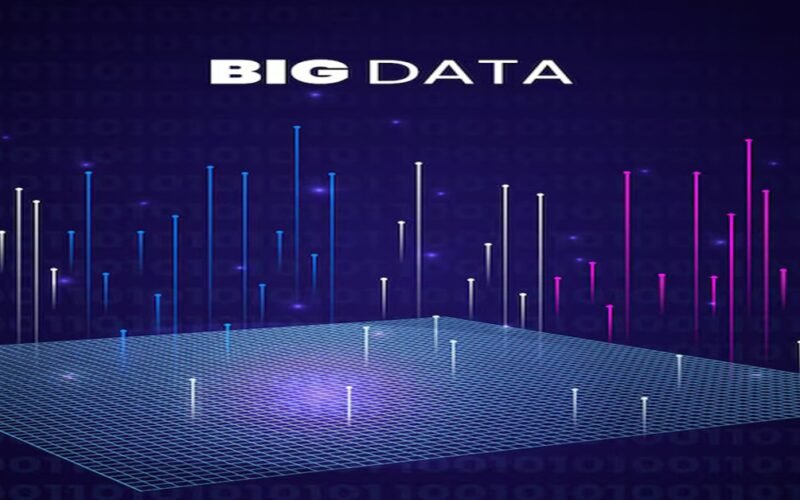Summary: This blog delves into the multifaceted world of Big Data, covering its defining characteristics beyond the 5 V’s, essential technologies and tools for management, real-world applications across industries, challenges organisations face, and future trends shaping the landscape. Understanding these elements is crucial for leveraging Big Data effectively.
Introduction
In today’s digital age, the term “Big Data” has become ubiquitous, representing a fundamental shift in how organisations approach data management and analysis.
With the exponential growth of data generated from various sources—ranging from social media interactions to IoT devices—understanding the characteristics and types of Big Data is crucial for businesses looking to leverage this valuable resource.
This blog will explore what Big Data is, delve into the 5 V’s that define it, discuss its characteristics beyond these dimensions, examine technologies and tools for managing Big Data, highlight use cases and applications, address challenges in managing Big Data, and look at future trends and innovations.
Read More: Top Applications of Big Data Across Industries
What is Big Data?
Big Data refers to datasets that are so large or complex that traditional data processing applications are inadequate to deal with them. It encompasses not only the sheer volume of data but also its variety and velocity.
Big Data can be structured, semi-structured, or unstructured, making it challenging to manage and analyse effectively. The rise of Big Data has been fueled by advancements in technology that allow organisations to collect, store, and analyse vast amounts of information from diverse sources.
The importance of Big Data lies in its potential to provide insights that can drive business decisions, enhance customer experiences, and optimise operations. Organisations can harness Big Data Analytics to identify trends, predict outcomes, and make informed decisions that were previously unattainable with smaller datasets.
The 5 V’s of Big Data
The concept of Big Data is often described through the framework of the 5 V’s: Volume, Velocity, Variety, Veracity, and Value. Each of these dimensions highlights a different aspect of Big Data.
Volume
Volume refers to the amount of data generated every second. With billions of users generating content on social media platforms, transactions occurring in real-time across e-commerce sites, and sensor data from IoT devices, the volume of data is staggering. Organisations must develop strategies for storing and processing this massive influx of information.
Velocity
Velocity pertains to the speed at which new data is generated and processed. In many industries, real-time analytics are essential for making timely decisions. For instance, financial markets rely on rapid processing of trading information to execute transactions efficiently. Streaming analytics tools enable organisations to analyse data as it flows in rather than waiting for batch processing.
Variety
Variety refers to the different types of data being generated. In addition to traditional structured data (like databases), there is a wealth of unstructured and semi-structured data (such as emails, videos, images, and social media posts). This diversity poses challenges for organisations in terms of storage solutions and analytical methods.
Veracity
Veracity addresses the quality and accuracy of the data being collected. High-quality insights depend on reliable datasets; thus, organisations must ensure that their data is accurate and trustworthy. This involves implementing processes for cleaning and validating incoming information.
Value
Value signifies the importance of extracting meaningful insights from Big Data. Simply having large volumes of data is insufficient; organisations must analyse this information effectively to derive actionable insights that can drive business growth.
Characteristics of Big Data Beyond the 5 V’s
Beyond the 5 V’s framework, several additional characteristics define Big Data. There are additional traits such as complexity, dynamic nature, real-time processing, and scalability, which further define the unique challenges and opportunities presented by Big Data in various applications.
Complexity
Big Data often involves complex datasets that require advanced analytical techniques for interpretation. This complexity arises from integrating various sources of information that may have different formats or structures.
Dynamic Nature
Data is not static; it continuously evolves over time. Organisations must adapt their strategies to account for changing datasets that reflect shifting consumer behaviours or market conditions.
Real-time Processing
The need for real-time processing has become increasingly important as businesses strive to respond quickly to market changes or customer needs. Technologies like stream processing enable organisations to analyse incoming data instantaneously.
Scalability
As organisations grow and generate more data, their systems must be scalable to accommodate increasing volumes without compromising performance. Cloud computing has emerged as a popular solution for providing scalable storage and processing capabilities.
Technologies and Tools for Big Data Management
To effectively manage Big Data, organisations utilise a variety of technologies and tools designed specifically for handling large datasets. This section will highlight key tools such as Apache Hadoop, Spark, and various NoSQL databases that facilitate efficient Big Data management.
Apache Hadoop
Hadoop is an open-source framework that allows for distributed storage and processing of large datasets across clusters of computers using simple programming models. It provides a scalable solution that can handle vast amounts of structured and unstructured data.
Apache Spark
Spark is another open-source framework designed for fast computation. It supports in-memory processing which significantly speeds up analytics tasks compared to traditional disk-based approaches used by Hadoop MapReduce.
NoSQL Databases
NoSQL databases like MongoDB or Cassandra are designed to handle unstructured or semi-structured data efficiently. They provide flexibility in terms of schema design and can scale horizontally across multiple servers.
Data Lakes
Data lakes are centralised repositories that allow organisations to store all their structured and unstructured data at any scale. They enable users to run analytics on vast amounts of raw data without needing prior structuring.
Machine Learning Tools
Machine Learning frameworks such as TensorFlow or PyTorch enable organisations to build predictive models based on Big Data Analytics. These tools help automate decision-making processes by identifying patterns within large datasets.
Use Cases and Applications
Big Data has numerous applications across various industries. From healthcare to retail, finance to transportation, the Use Cases and Applications section showcases the transformative potential of Big Data Analytics in driving innovation, improving decision-making, and optimising operations.
Healthcare
In healthcare, Big Data Analytics can improve patient outcomes by analysing medical records, treatment histories, and real-time health monitoring from wearable devices. Predictive analytics can help identify potential health risks before they become critical issues.
Retail
Retailers leverage Big Data to understand customer preferences better through purchasing patterns analysed from loyalty programs or online shopping behaviour. This insight allows them to tailor marketing campaigns effectively.
Finance
Financial institutions use Big Data for fraud detection by analysing transaction patterns in real-time. Additionally, risk management models benefit from predictive analytics based on historical financial performance metrics.
Transportation
Transportation companies utilise Big Data Analytics for route optimization based on traffic patterns collected from GPS devices or mobile applications. This leads to more efficient logistics operations.
Challenges in Managing Big Data
Despite its potential benefits, managing Big Data presents several challenges. The Challenges in Managing Big Data subtopic addresses the complexities organisations face when handling vast datasets. It explores issues such as data privacy concerns, integration difficulties, skill shortages, and cost management, highlighting the obstacles that can hinder effective Big Data utilisation and implementation.
Data Privacy Concerns
As organisations collect vast amounts of personal information about consumers, they must navigate complex regulations regarding privacy (e.g., GDPR). Ensuring compliance while leveraging this information poses significant hurdles.
Integration Issues
Integrating disparate sources of information into a cohesive system can be challenging due to differences in formats or structures among various datasets.
Skill Shortages
There is a growing demand for skilled professionals who can analyse Big Datasets effectively using advanced analytical techniques like Machine Learning or statistical modelling. The shortage of qualified personnel hampers many organisations’ ability to fully leverage their Big Data capabilities.
Cost Management
Implementing robust infrastructure capable of handling large volumes requires substantial investment in both hardware resources (e.g., servers) as well as software tools (e.g., analytics platforms). Balancing costs while maximising returns remains a challenge for many businesses venturing into big-data initiatives.
Future Trends and Innovations
Looking ahead, several trends are shaping the future landscape of big-data management. It highlights emerging technologies, such as Artificial Intelligence, Machine Learning, and edge computing, that are reshaping how organisations harness data for insights, efficiency, and competitive advantage in various industries.
Increased Use of AI And Machine Learning
As Artificial Intelligence (AI) becomes more integrated into business processes across industries; Machine Learning algorithms will play an increasingly crucial role in automating decision-making based on insights derived from large datasets.
Edge Computing
Edge computing involves processing data closer to its source rather than sending it all back into centralised cloud systems; this reduces latency while improving response times—particularly beneficial for IoT applications where real-time analysis is critical.
Enhanced Data Governance
Organisations will need stronger governance frameworks around their use/management practices concerning sensitive personal information collected through various channels—ensuring compliance with evolving regulations while maintaining consumer trust will be paramount moving forward!
Conclusion
In conclusion; understanding characteristics/types associated with “big-data” empowers organisations seeking competitive advantages through effective utilisation! By embracing frameworks like 5V’s alongside emerging technologies/tools available today—businesses can unlock immense value hidden within vast quantities generated every second!
Frequently Asked Questions
What Defines Big-Data?
Big-data refers specifically to large/complex datasets requiring advanced techniques & technologies beyond traditional methods for effective analysis/management!
How Do Businesses Benefit from Utilising-Big-Data?
Businesses gain insights leading to improved decision-making processes enhancing customer experiences optimising operations ultimately driving growth/profitability!
What Challenges Do Organisations Face When Managing-Big-Data?
Challenges include privacy concerns, integration issues, skill shortages, cost management among others impacting successful implementation strategies!




